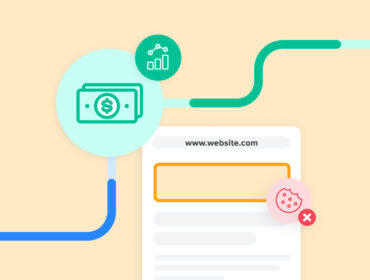The future of identity, attribution & measurement
By now, we all understand that the deprecation of cookies has major implications for digital advertising. Recently, Prohaska Consulting presented a webinar on Identity, Attribution, and Measurement designed to offer insight into what marketers can expect from the months to come.
Featuring Josh Groth, VP of global performance marketing with Square, and moderated by LiveIntent CMO, Kerel Cooper, the webinar addresses the conversation around third-party cookies, privacy protection, the future of identity, and what all of this means for marketers. Here are three main takeaways from Groth and Cooper’s fireside chat to help get you on the right path.
Channel diversification
When it comes to cookies, Groth believes we have to accept the inevitable: privacy and tracking will continue to evolve. There are a dozen other states with similar legislation to the California Consumer Privacy Act (CCPA), and that means big changes are on the horizon.
“We’re at the stage where we have to embrace the new reality and find the appropriate path forward,” explains Groth. That said, he also believes that marketers should look at this as an opportunity. Privacy has “leveled the playing field” for advertisers. Everyone faces the same challenges when it comes to reducing media costs and improving performance, and those who embrace the opportunity now will have a competitive advantage.
According to Groth, the past decade has led to an overweighting and over-indexing on digital platforms like Facebook and Google. Rather than striving for a balanced portfolio, advertisers have spent heavily on the channels known for providing customer insight. Facebook and Google, which have relied on third-party cookies to date, are adopting new strategies — and CPMs are on the rise. “That doesn’t mean you shouldn’t advertise there, but you need to think about their dependencies,” says Groth.
That’s where channel diversification comes in. There are other channels that don’t have those same dependencies, including streaming/OTT (over-the-top media) and direct mail. “There’s been a crazy boom in available impression share to buy and serve ads against,” Groth says of streaming. Meanwhile, direct mail is a hot topic because of its use of physical addresses, which allows brands to leverage machine learning to reach their target customers.
It’s important to note that companies buying on a broader scale will be less impacted than, say, a gaming or direct-to-consumer brand. The more dependent you are on a specific signal, the more expensive your media costs. A hyper-targeted marketing effort is inherently more costly, putting SMBs in the position of having to seek out other options.
Balance data and creative
In the webinar, Cooper asks Groth his thoughts on balancing data and creative, and how marketers stand to capitalize on the latter. Groth’s reply? He looks at data and creative in the context of risk mitigation. “You should be thinking long-term for the next two, three, four quarters to test channels and balance out your portfolio.”
One way to do that is by zeroing in on creative. Groth recommends that advertisers roll out tests and alter creative so they can gauge whether or not it augments performance and lifetime value. His own approach has involved building a content library of hundreds of two-to three-second video clips that can be combined to create varying videos. This strategy allows advertisers to isolate variables. “It’s the best defense against rising media costs,” he says. “Facebook CPMs are still going up, but we can chip away at acquisition costs.”
Prepare your team for success
Something else to consider when preparing for a cookieless future? Teamwork. Up until now, many departments have been siloed, but the time has come to emphasize collaboration among brand, content, and performance teams. Think about your media choices and layer creative strategy with targeting.
Groth says companies should move “at a more agile pace” and use marketing as a real-time focus group to update every aspect of their brand footprint. People must work in tandem, and that requires a different skill set.
Even with months to prepare for the impending loss of third-party cookies, there’s a lot for brands to think about. It’s time to get ready for the tumultuous time ahead.


